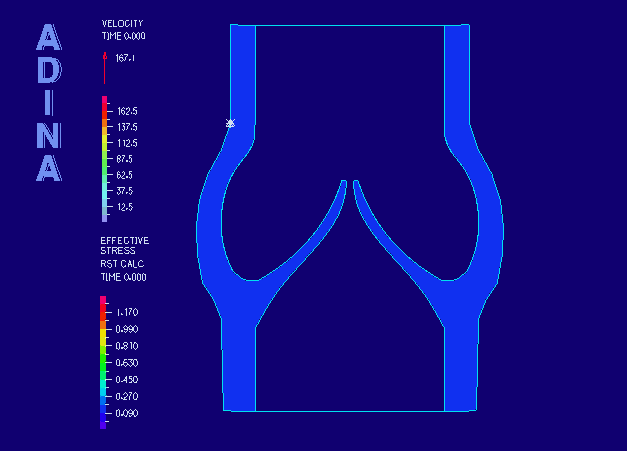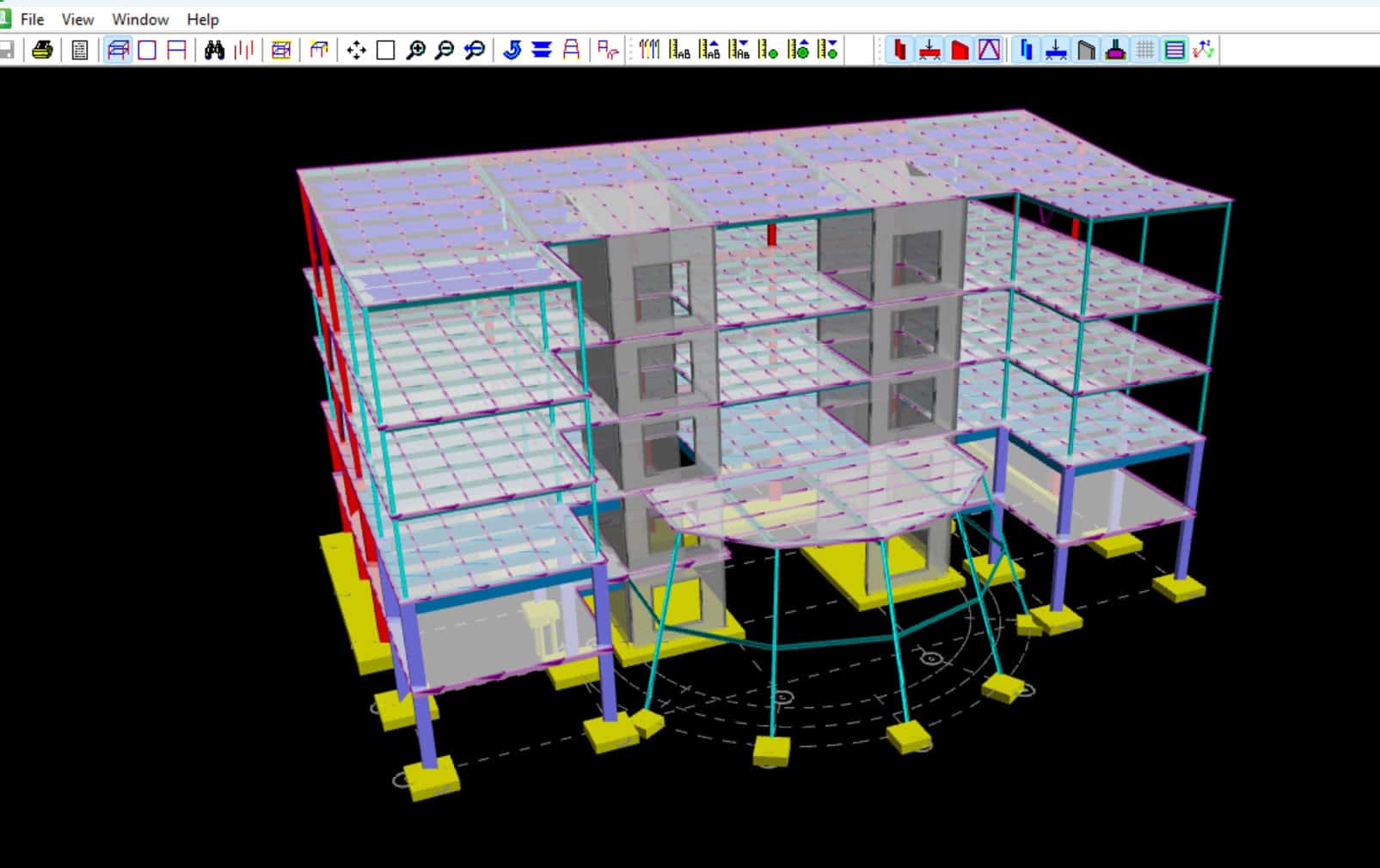Since the time of Leonardo Da Vinci, it has been recognized that the sinuses behind the aortic valve leaflets produce vortices that aid in closure with minimal trans-valvular pressure.

In this example, we model an aortic valve with ADINA. The aortic root and valve are represented by a two-dimensional plane strain mesh. A sinusoidal pressure of 14 mmHg is applied to the ventricular face. Blood is treated as a slightly compressible Newtonian fluid with a viscosity of 4.6 centipoise, corresponding approximately to an experimentally determined shear rate of 180/s at 37°C. Both the leaflets and the aortic root are modeled as isotropic Neo-Hookean large-deformation solids with a constant of 50 kPa. The solution was obtained with ADINA-FSI.
Though it is well known that both structures are highly anisotropic, this plane strain example illustrates how ADINA effectively handles the difficult problem of the contact of two submerged cardiac leaflets.
Problem provided by Dr. Daniel Einstein, Univ. of Washington




